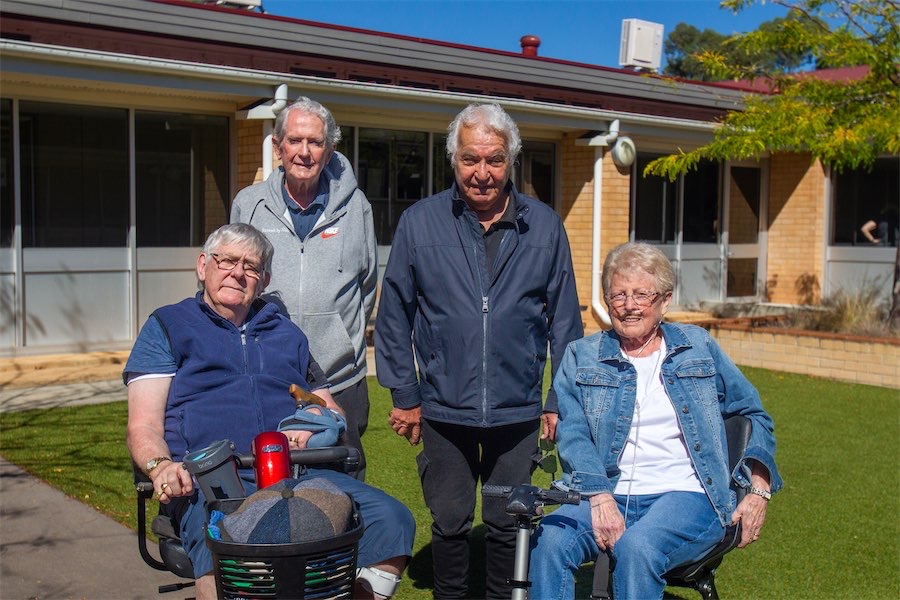“Since self-government, the share of social housing has declined from 12 per cent to 6 per cent of the total housing stock… No wonder the government has struggled to justify the priority given to light rail,” writes former planner MIKE QUIRK.
A KEY consideration in city planning is where growth is accommodated.

Compact city policies have been widely adopted in order to widen housing choice, deliver environmental benefits, infrastructure and travel cost savings.
The recently released District Planning Strategies and the District Population Projections 2022-2060 were prepared in the context of such policies. Consistent with the policies, development is assumed to be contained within the existing urban footprint.
The District Strategies identify a need for 100,000 additional dwellings in Canberra by 2050 and a potential supply of between 117,800-148,500 dwellings to meet the demand.
Of this supply, 28,000 to 31,000 dwellings are in Belconnen, 5500-6000 in Gungahlin, 14,500 to 25,500 in north Canberra, 8000-13,500 in south Canberra, 20,000-24,000 in Molonglo, 21,000-23,500 in Woden, 4000-5500 in Weston Creek and 16,300 to 18,500 in Tuggeranong.
The District Strategies identify the demand for dwellings by dwelling type (see Table 1).

The estimates need explanation, especially assumptions about the propensities of different households to occupy higher-density dwellings. How, for example, was it determined that Tuggeranong required 36 per cent and Weston Creek 33 per cent fewer separate dwellings and south Canberra and north Canberra required 91 per cent and 67 per cent more higher-density dwellings respectively?
The strategies indicate a mismatch between the level of demand and the substantial housing supply opportunities in Tuggeranong. One approach would be to adopt strategies to increase the demand for properties in Tuggeranong that would include encouraging additional employment and improved transport services. This could also result in improved utilisation of infrastructure including schools.
Future District Strategies should include Queanbeyan and Yass as the failure to adequately integrate the region in planning is leading to sub-optimal outcomes, as reflected in the increase in car-dependent development in the region, counter to the aims of reducing the environmental impacts Canberra’s development. Such analysis could identify the need to develop additional greenfields land in the ACT.
The District Population Projections (see Table 2) project an increase in Canberra’s population from 457,600 in 2022 to 695,700 in 2050 and the population growth by district and suburb to 2050.
It is unclear how the projected populations were determined in the absence of a housing preferences study.

The task is complex as it requires assumptions to be incorporated about intra-city migration (a tough task given households change location every seven years or so), detailed knowledge of infrastructure requirements and where development is likely to occur by dwelling type, difficult when a substantial level of supply is by privately initiated redevelopment.
The projections can only be described as rubbery, more reliable in the short term (around seven years) when there is greater certainty about where land is likely to be developed and of the overall level of growth, although as the covid pandemic indicates, there can be sudden changes in growth parameters.
Given projections are a key input in the preparation of multi-billion dollar infrastructure programs, it is essential they have a sound analytical base.
The compact city policies, on which the projections are based, need regular review to ensure the claimed benefits are being realised and the appropriate priorities are being addressed.
Since self government the priorities of largely Labor/Green governments have seen a decline in the share of social housing from 12 per cent to 6 per cent of the total housing stock.
It is no wonder the government has been struggling to justify the priority given to light rail when there has been such underinvestment in social housing and other high priority areas including the health system.
Canberra’s planning and transport strategies are deficient and need review. Too many decisions have been based on rhetoric and superficial analysis.
The major political parties should commit to a review to establish a firm analytical base for decision-making to improve the social, environmental and economic sustainability of the city.
A better analytical base alone will not guarantee good decisions, as the decision to develop light rail despite evidence that a busway would deliver a similar level of benefit at half the cost, demonstrates. We need better governance.
Mike Quirk is a former NCA and ACT government planner.
Who can be trusted?
In a world of spin and confusion, there’s never been a more important time to support independent journalism in Canberra.
If you trust our work online and want to enforce the power of independent voices, I invite you to make a small contribution.
Every dollar of support is invested back into our journalism to help keep citynews.com.au strong and free.
Thank you,
Ian Meikle, editor





Leave a Reply